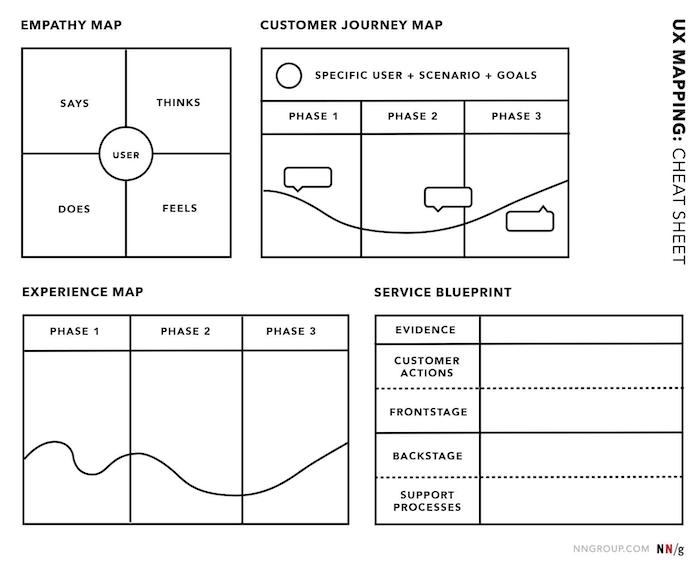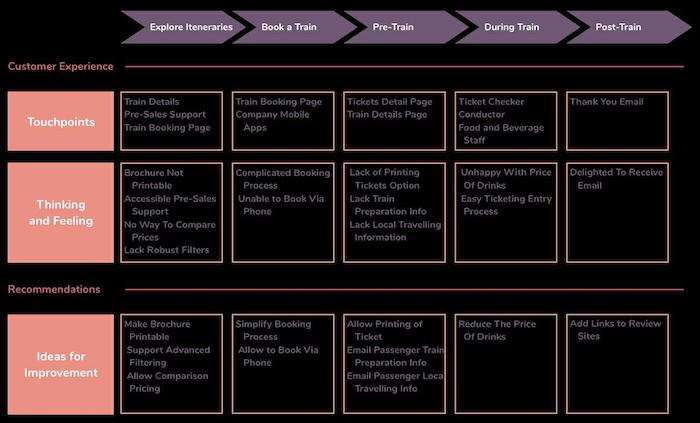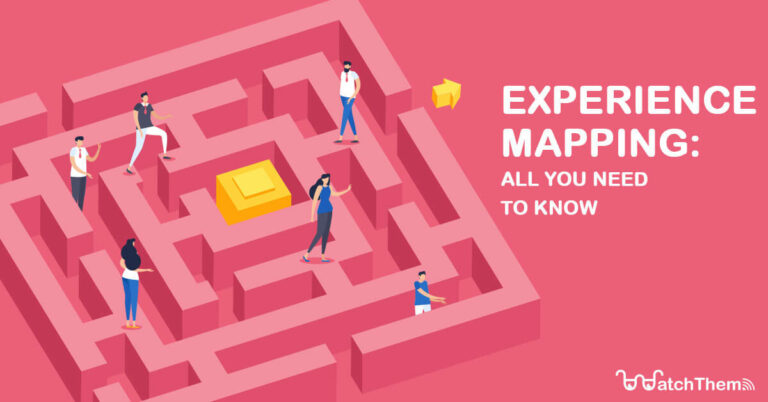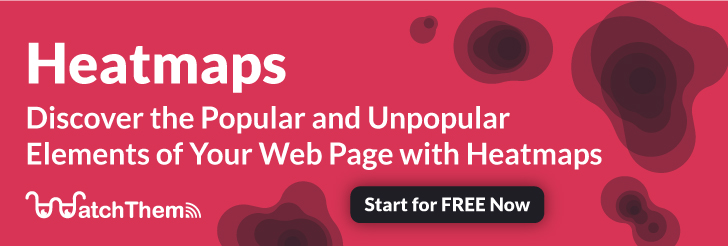Page Contents
Experience mapping is a method used by UX designers that gives you a unique perspective on the user journey from beginning to end. It gives brands the emotional context they need to understand how to reduce friction and deliver better experiences.
Here we discuss why brands use experience maps and how they actually work. Let’s get started.
Heatmaps are the best visualization of how users interact with your web pages which plays an important role in experience mapping. Want heatmaps? Sign up to WatchThemLive and get started.
What Is Customer Experience Mapping?
Experience mapping is a user experience method that visualizes the end-to-end experience a typical user has when attempting to fulfill a task.
If you want to know whether the users are having a positive or negative experience with your product, you need to know how they’re feeling, thinking, and behaving at important moments.
Why Should You Build an Experience Map?
An experience map allows an organization to see the bigger picture, identify pain points, and make research-based decisions about where to focus activities. By taking a step back and looking at the bigger picture, you’ll be able to:
- Prioritize projects and create a roadmap
- Find ways to be more innovative
- Recognize the areas where the user experience is currently well-designed
- It facilitates the collaboration between developers and designers
- It enables companies to prioritize actions in their experience strategy and product roadmap
When Is Experience Mapping Used?
You should create a customer journey map first to obtain a general understanding of human behavior. So you have to use experience mapping at the beginning of the mapping process. They assist a company in determining how potential users solve problems in the absence of your product – this allows you to uncover chances in your own design to smooth out and solve pain points. Another time that you can use experience mapping is when you’re combining numerous experiences into a single visualization.


What Role Does Mapping Play in the User Experience Design Process?
Experience maps help you track your customers’ motivation and behaviors before, during, and after the online experience. This level of understanding is a prerequisite of creating digital products based on empathy by tracking how users enter your site, what motivates them to use your product, and how to help them after they’re done in a way that fosters customer loyalty.
You can use experience maps at any time in the lifecycle of a digital product, but they’re the most useful at the digital prototyping stage. You may ask why? Because they can aid in the early detection of possible frictions and identifying opportunities to increase customer engagement., informing the development of digital products.
Furthermore, experience mapping is useful for discovering strategic opportunities and quickly generating ideas early in the UX design process. It’s an excellent method for getting the team involved and aligned early on, encouraging creativity, and ensuring customer-centricity from the beginning.
Experience mapping is most effective when combined with discovery or investigative approaches such as Future Backwards, service blueprint diagrams, and impact mapping to assure the development of digital goods that fit your consumers’ demands and behaviors.
Let’s take a look at each of these approaches:
1. Future Backwards
Future Backwards is a simple process that might bring amazing results or cause your business disaster. This approach can help you plan a journey that will lead you to the desired outcome.
2. Service Blueprint Diagrams
Service blueprint diagrams visualize the relationship between the components of a service-based business. It maps what a user sees and interacts with and what’s motivating them during the journey. By using service blueprint diagrams, you can find out if any changes have happened in your business or any changes in the future.
3. Impact Mapping
Impact mapping is a graphic strategy planning tool for determining which product features to include. All the features in the map directly impact attaining product goals and impact mapping provides clear reasoning for how they will do so.
All these methods can help you understand how users engage with your product. However, experience mapping can provide a unique insight into the lifecycle of a user’s specific requirements, as well as opportunities to visualize ideas quickly and assist all stakeholders to focus on prospective outcomes right away.
How Does the Mapping Process Work?
Experience mapping begins with the process of empathy mapping which includes doing, thinking, and feeling. You will have a map that visualizes a specific moment in the user journey, which helps you see if you need to change or improve that moment of the user journey.
Moreover, this map breaks down that specific moment into the user’s current condition (what they are doing), their next steps (what they are thinking), and their state of mind (what they are feeling). What the user is thinking is the most important part of the user journey because you can make decisions based on a high level of user emotion that can make or break the journey.
Now is the time to understand this process through a business case study.
Imagine using Google Analytics and finding out that your shopping cart has a high abandonment rate. You can isolate pain points and begin to uncover opportunities by breaking down what the user is doing, thinking, and feeling as they add items to their shopping cart and proceed to checkout.
Now your team is able to use their creativity to generate new ideas and choose ones that they can work on first.


How Do I Make an Experience Map?
There are six steps in making an experience map that we will review:
1. Create a Persona
The first step in creating an effective user experience map is to create a persona to help you understand who your customers are. This will assist your company in determining who your actual customers are, what they need, and how they interact with your company across all channels.
2. Define the Stages of Your Customers’ Experience
Defining customer experience stages, often known as phases, are the most frequent way to structure a user experience map. Each stage will depict the main goal your customers are attempting to attain along their journey. They’ll show you your customer’s motivation or objective for their current journey.
This step aids in visualizing the process from your customer’s consideration phase to the purchase of your goods or service. It also aids in identifying how, when, and where your customer learns about your product, when they choose you over your rivals, make purchases from you and maintain a positive relationship with you.
3. Determine Customer Interaction
Next, determine the client’s touchpoints, where they interact with your company, to define your customers’ interactions. from beginning to end. Improving each touchpoint improves the user’s overall experience.
Signing up for a newsletter, creating an account, visiting a website, browsing ratings and reviews, contacting support, and purchasing a product are all examples of typical touchpoints. Understanding the bigger context of each touchpoint can help you improve each step of your customer journey. This also helps you create better experiences by anticipating customers’ needs and problems.
WatchThemLive’s heatmaps are the best tool that helps you in customer tracking. If you’re interested, sign up FOR FREE and get started.
4. Research
In the next step, you must research by communicating directly with users, using various recruitment strategies for UX testing. It’s critical to include people who would actually utilize your product as participants. This enables you to obtain the most accurate information. As a result, the recruiting screening procedure is critical. You can find participants through a variety of ways, including your existing users, social media, and classified ads. You can also use third-party organizations that specialize in discovering targeted users for research.
It’s up to you to select how much involvement your users will have once they’ve been acquired. A web survey, phone interview, in-person interview, and remote testing are all examples of this. Most individuals are willing to participate if they believe you are interested in helping them, especially if they are motivated! One more point is that it is best to provide some type of incentive to your participants at all times. Interviewing consumers is a worthwhile investment since it allows an organization to understand the customer experiences, which they can use to make informed design decisions.
5. Identify the Sources of Friction
Take a step back and look at the bigger picture when you’ve figured out your persona, their goals, and the path they’ll follow to get there. You can better understand the wider scenario and find sources of friction when you look at your customer’s entire experience. After you and your team discover the friction points, try to find solutions for them.
Conclusion
In this article, we talked about experience mapping in-depth. We discussed why and when you should use it, its functions, and its role in the UX design process Additionally, we talked about six steps on how to make an experience map. Tracking your customer’s behavior is an important part of the mapping process. If you are looking for a tool to do this for you, WatchThemLive is the best option. Sign up and get started.
Good luck!



